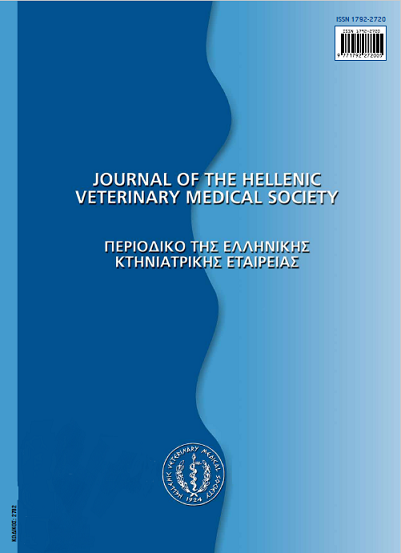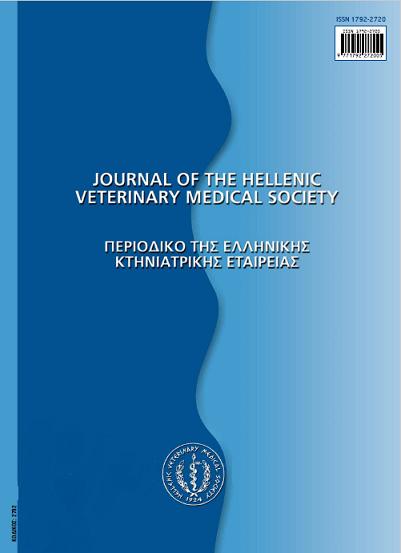Equine Laminitis: A retrospective study of 55 cases (2000-2004)
Résumé
Laminitis is a common equine disease. In order to have a good prognosis, prompt therapy is essential. Fifty-five cases of equine laminitis, that were treated in the Clinic of Surgery, School of Veterinary Medicine, were included in this study. More specifically, the clinical presentation and the diagnostic approach are described and the therapeutic protocol is evaluated. At the same time, the literature is reviewed as far as the epidemiology, the pathogenesis, the clinical signs, the diagnosis and the treatment is concerned. It is worth mentioning that several therapeutic protocols have been put forward for the treatment of laminitis, perhaps due to the fact that its pathogenesis is still under dispute. Prolonged rest, frog support, cols hosing of the feet, severe diet, administration of antibiotics and non-steroidal anti-inflammatory drug were the key points of the protocol of this study that led to extremely good results for the majority of the cases.
Article Details
- Comment citer
-
PAPAKONSTANTIS (Ι. ΠΑΠΑΚΩΝΣΤΑΝΤΗΣ) I., DIAKAKIS (Ν. ΔΙΑΚΑΚΗΣ) N., PATSIKAS (Μ. ΠΑΤΣΙΚΑΣ) M., & DESIRIS (Α. ΔΕΣΙΡΗΣ) A. (2017). Equine Laminitis: A retrospective study of 55 cases (2000-2004). Journal of the Hellenic Veterinary Medical Society, 58(2), 107–123. https://doi.org/10.12681/jhvms.14978
- Numéro
- Vol. 58 No 2 (2007)
- Rubrique
- Research Articles
Authors who publish with this journal agree to the following terms:
· Authors retain copyright and grant the journal right of first publication with the work simultaneously licensed under a Creative Commons Attribution Non-Commercial License that allows others to share the work with an acknowledgement of the work's authorship and initial publication in this journal.
· Authors are able to enter into separate, additional contractual arrangements for the non-exclusive distribution of the journal's published version of the work (e.g. post it to an institutional repository or publish it in a book), with an acknowledgement of its initial publication in this journal.
· Authors are permitted and encouraged to post their work online (preferably in institutional repositories or on their website) prior to and during the submission process, as it can lead to productive exchanges, as well as earlier and greater citation of published work.











